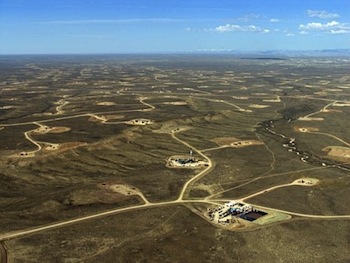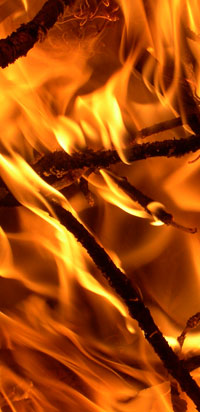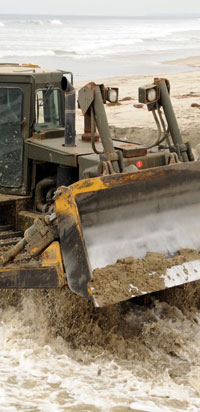
 The New York Times this week published emails from natural gas industry insiders and analysts suggesting that economic and production forecasts have been overhyped, possibly illegally.
The New York Times this week published emails from natural gas industry insiders and analysts suggesting that economic and production forecasts have been overhyped, possibly illegally.
Now Congress is seeking hearings on potential fraud. The revelations come on the heels of growing concerns about the environmental costs of hydrofracturing, or "fracking," a technique considered vital to accessing large domestic reserves of natural gas.
I was struck by the extent of the skepticism among industry and federal regulators as reflected in the emails we published. The point of the story was to highlight a set of questions that a significant number of industry officials, regulators, and market analysts were asking privately in emails and that the public deserved to know. The emails and data clearly offered a perspective that so far has not been sufficiently considered by lawmakers, landowners, lenders, electricity consumers, and Wall Street. If natural gas is going to be the fossil fuel of tomorrow, then there needs to be a candid discussion about the economics, long-term well performance, and appropriate oversight of the industry. A couple of analysts have looked closely at the documents and pondered the points made in those internal documents.
Background: The oil and gas industry has a long history of booms and bust that no one ever seems to see coming. The natural gas industry in particular has a recent history of dramatically fluctuating prices. For example, take a look at this slide showing the fluctuation in natural gas prices and this annotation related to an e-mail in which an industry official discusses the shale oil boom in the 1980s.
I’ll be watching … for a more reflective discussion from petroleum geologists and some market analysts about the real costs of drilling and whether companies are fully disclosing the true long-term productivity and profitability of wells.
Read more about this topic
A few analysts had been grumbling about the financial viability of the natural gas drilling industry since the middle of 2009, so the fact that there were questions out there about the financial underpinnings of the gas boom aren’t necessarily a surprise. Arthur Berman, one of the The New York Times sources, had distributed a study showing that gas reserves weren’t as economical to harvest as the industry said, and he pointed out that some wells were drying up quicker than expected. Pro Publica looked into it at the time but didn’t see a clear enough contradiction between output data and industry disclosures to shareholders and analysts.
Pressure: The stock market’s reaction to The New York Times story is the barometer for the issue’s seriousness. If the energy industry has truly overhyped the investment potential, then you’d expect investors to flee. On the other hand, stable stock prices in these companies would indicate that investors are not particularly alared by these latest revelations.
Energy insecurity? If it is true that companies have fraudulently sold a false story about the viability of gas drilling to meet U.S. energy needs, then it's an extraordinary story and raises important questions about whether the environmental costs of extraction are justified.
Read more about this topic
The No. 1 thing to know about hydraulic fracturing, or fracking, is that it's a lot more expensive to drill a hole horizontally and frack it than it is to just drill a hole straight down and access natural gas. The natural gas industry had been doing the latter, getting the easy gas. The “new” reserves have been known for decades. The only thing that has changed is the economics: scarcity makes natural gas more expensive, which makes new techniques to access harder-to-reach gas economically viable. However, new supplies of natural gas lower its price — a business Catch-22.
Setting it straight: Fracking is old technology and, arguably, less important than horizontal drilling techniques used to access to shale gas. Fracking and horizontal drilling were originally developed to access oil.
Low down: Is shale gas a bridge fuel to a low-carbon future? Or is it a distraction from the real work of decarbonizing our energy supply? Natural gas — essentially methane — is the cleanest-burning fossil fuel but is, in itself, a potent greenhouse gas.
| Tweet This Page |












